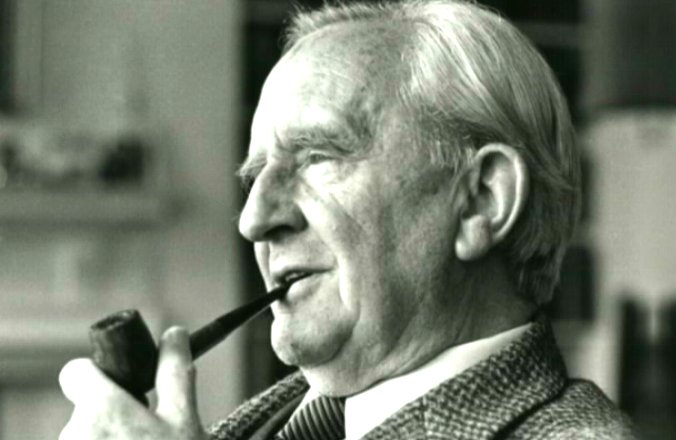This article was translated by John R. Bopp
This weekend, the first of three films in will debut, bringing one of the most popular and well-known works by J.R.R. Tolkien to the silver screen: The Hobbit. And as strange as it may sound, this work has a relationship to Bilbao.
Now, unless you’ve been living under a rock, you’ll know that the name of the protagonist of this book and film series is named Bilbo Baggins. This “halfling,” as they’re called in Middle Earth, has a name that any Basque would immediately recognize: the name in Basque of the largest city (by population) in the Basque Country, Bilbao. If our readers think that this must be nothing more than a coincidence, well, we’ll have to say that you’re probably wrong. We say “probably” because the author never explained if there were any connection.
John Ronald Reuel Tolkien was a British citizen born in South Africa, and apart from writing wonderful, complex adventure tales that seem to be written for children but which are dedicated to adults, he was an Anglo-Saxon language professor from 1925 to 1945, as a Rawlinson and Bosworth Professor at Oxford University, and from 1945 to 1959, professor of English Language and Literature at Merton. He was a close friend of fellow author C.S. Lewis and both were members of an informal literary debate group known as the Inklings. Tolkien was named a Commander of the Order of the British Empire by Queen Elizabeth II on March 28, 1972

Given all that, it must be quite obvious that he was intimate with the work of William Shakespeare. The most important author in English literature uses the word “bilbo” twice, to refer to the city and the iron that came from it.
In “The Merry Wives of Windsor,” Shakespeare refers to the bilbo sword. This was the name given in the 16th century to a short, well-tempered, and very sharp blade that received its name from the city where the highest-quality ones were produced and thence exported all over Europe. He even uses the insult “latten bilbo,” since a brass bilbo is useless given its lack of durability; a bilbo could never be made of brass, as they were always made of high-quality steel.
In “Hamlet,” Shakespeare refers to the Bilboes. These are handcuffs used by the British navy (curiously, the bilbo swords were also quite popular with that same navy), which were famous for their durability and which were used to keep prisoners or slaves from escaping. As the name implies, the highest-quality ones were made of steel that came from Bilbao. Cf the definitions at the Oxford Reference.
And if we dig a bit deeper into Tolkien’s works, we see that there are two elements which play a fundamental role in the story and life of Bilbo Baggins.
The first is of course the One Ring, around which the whole story orbits. Tolkien defined it as:
One ring to rule them all, one Ring to find them
One ring to bring them all and in the darkness bind them
So really, it was a ring to enslave: bilboes to tie everyone and turn them into Sauron’s slaves.
The other element is the Sting, an elvish short sword (almost a dagger) that Bilbo Baggins finds in the Troll lair and which glows whenever orcs or other servants of the Dark Master are near. It’s a short, shart, and durable weapon, much like what Shakespeare refers to in his works.
We’ll finish off with an amazing reference to this curiously interesting matter. It’s from the Open Shakespeare website regarding the word “bilbo,” and where, in addition to discussing Tolkien’s works, there is also a direct reference to the relationship between this word and between Bilbao and Tokien’s works. We’ll also include a list of the specific places where “bilbo” is mentioned in Shakespeare’s works.
And finally: Tolkien was a British Catholic who was orphanes very young, and whose tutor was a…Jesuit.
It seems Open Shakespeare is transforming into Open Literature. While they’re in the moving process, we’ll leave you with an alternative link to the “bilbo” entry, which had previously found from the Open Humanities website:
Open Humanties – 8/4/2010 . Gran Bretaña
Word of the Day: Bilbo
Perhaps there will one day be a site called ‘Open Tolkein’. Until then, allow me to draw your attention to the occurences of the name of one of the Old Inkling’s most famous characters in the works of the Bard.
(Continue) (Automatic translation)
Where are the references to bilboes in “Hamlet”?
SCENE II. A hall in the castle.
Enter HAMLET and HORATIO
HAMLET
So much for this, sir: now shall you see the other;
You do remember all the circumstance?
HORATIO
Remember it, my lord?
HAMLET
Sir, in my heart there was a kind of fighting,
That would not let me sleep: methought I lay
Worse than the mutines in the bilboes. Rashly,
And praised be rashness for it, let us know,
Our indiscretion sometimes serves us well,
When our deep plots do pall: and that should teach us
There’s a divinity that shapes our ends,
Rough-hew them how we will,–
————————————
Since openshakespeare.org is moving (we’ll update the link as soon as they’re finished),, check out openliterature.net:
Open Literature – Gran Bretaña
Bilbo
Perhaps there will one day be a site called ‘Open Tolkein’. Until then, allow me to draw your attention to the occurences of the name of one of the Old Inkling’s most famous characters in the works of the Bard.
(Continue) (Automatic translation)
Places where the word “bilbo” appears in the works of Shakespeare
(Continue)
Places where the word “bilboes” appears in the works of Shakespeare
(Continue)
Last Updated on Dec 20, 2020 by About Basque Country































